Category: FAIRS
FAIRS
November 9, 2012 — December 1, 2012
“To see oursels as ithers see us!” Robert Burns, 1786
Daniel Blau Ltd. and Galerie Meyer are pleased to present ALLER-RETOUR, an exhibition of pictures from the Apollo X1 journey to the Moon. These works are arguably the ultimate reflection on the theme “The Journey”, the subject of Photo Saint-Germain-des-Prés 2012. This journey’s departure, destination and return extend beyond space and time into the realm of the unknown.
Space exploration has once again captivated the public with the recent landing of Mars rover “Curiosity”, which has produced unparalleled views of the “Red Planet”. Moreover, the recent passing of Neil Armstrong on August 25, 2012 is a poignant reminder of the monumentality and timeless intrigue of space in relation to mankind. Armstrong, reflecting on his journey to the Moon revealed: “the unknowns were rampant”. Set within the backdrop of the Cold War, with intense political tension between the United States and the USSR, the lunar module dubbed “The Eagle” landed Armstrong and Aldrin – with only thirty seconds of fuel remaining – on the Moon in July of 1969. An estimated 550 million people witnessed this undeniably historic event, as Armstrong and Buzz Aldrin explored the Moon’s surface for the very first time. Photographed over two hours while documenting and sampling the Moon, these original photographs remain the most expensive pictures ever taken in terms of their cost of production.
The “magnificent desolation”, as Aldrin described the surface of the Moon, had been photographed via telescope by Lewis Morris Rutherford in the 19th century. However, these 1969 photographs of an unprecedented clarity, the result of unfiltered sunlight in situ, epitomize the magnificence of space. The glorious nostalgia of this fortunate era is reflected in these incredible photographs.
50 years after the first man orbited Earth, the splendour and sublime quality of these groundbreaking pictures of the Moon continue to evoke wonder.
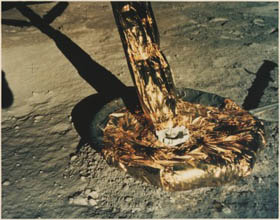
October 11, 2012 — October 14, 2012
For the inaugural Frieze Masters art fair in London we will be showing the third part of our exhibition trilogy “From Silverpoint to Silver Screen”, a special one-man exhibition of Andy Warhol drawings from the 1950s.
These outstanding drawings are from the personal collection of one of the 20th century’s most significant artists, presented to the public for the first time, 50 years after their creation. We are afforded a unique and comprehensive insight into Andy Warhol’s work in the 10 years following his departure from the grey city of Pittsburgh, during the period of his artistic emancipation in New York. This is an opportunity to get to know him as the grand draftsman that he was.
Excerpt from the catalogue text by Sydney Picasso:
…
And his thirst bore him through, every image was seized, and while moments of repose produced slow and steady line drawings, time passing drove him to tracing, blotting, repro, collage; in this series we observe an impressive roster of techniques. The theme is not idleness, it is haste, an irrepressible drive to get on with it, to record and thus “live” this new life he has embraced, which will turn out to be tragically short. His “Walk on the Wild Side”: thirty odd years of total immersion, and I believe revelry, in a world he had only glimpsed before arriving on the streets of New York. “I was nobody, I came from nowhere,” he repeated. And as he was willing to literally try anything, we witness here such odd subjects as children in groups, facial studies, and the infamous child shooting up “America’s nightmare,” a mercenary drawing for a CBS series of recordings based on childhood addiction: Andy won the “prize” for art direction for this project and the image became iconified in what would become the first of his many record covers. This initiated yet another chapter in his endless forays into media, to the point that certain later images would portray the Daily News heading directly incorporated in the painting, such as in Daily News, 1962, portraying Eddie Fisher and Liz Taylor’s breakup.
Special Preview: 9 Oct, 3 – 8 pm
Professional View: 10 Oct, 11 am – 7 pm
Exhibition: 11 – 13 Oct, 12 – 7 pm
14 Oct, 12 – 6 pm
Regent’s Park, London
Booth F13
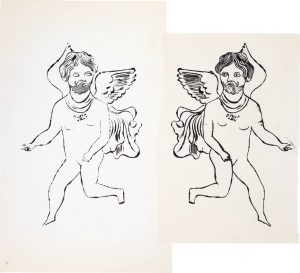
September 20, 2012 — September 23, 2012
For our first exhibition at Expo Chicago we are pleased to offer an overview of our extensive collection in the form of a selection of works on paper from 1950 – 1980. Our mixed booth is a representation of the gallery’s program, and all works hail from past and future exhibitions.
We present a varied taste of the art that came out of the mid-to-late twentieth century. Gathered here is a diverse juxposition of black and white photos, including a number of NASA prints, works by German artists such as Georg Baselitz, Matt Mullican’s stick figures, and to complement our upcoming London exhibition of David Bailey’s Papua New Guinea polaroids, we will have on show a number of his Planet of the Apes polaroids.
Please join us for our opening at Booth 503 on 19th September from 3 – 9 pm.
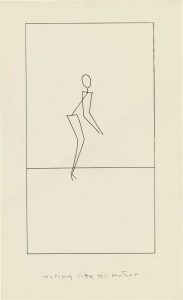
June 12, 2012 — June 17, 2012
And as Warhol was a man of few words, his drawings speak: in praise and eloquence of his world, the gaudy rush of images he must have assimilated, arriving in New York from the dark and smoky depths of Pittsburgh. And what results is reactive, he just cannot draw enough. He observes, records and stages – much in the way he dresses windows, the ongoing play of life and its actors. And until he grasps the Polaroid – another direct tool of observation, the hand and the pencil work ceaselessly. And the mass of images produced by 50s and 60s glossy magazines streams by. The weeklies became a window to the world and its frenzy. As Weegee and others constantly pounded the streets at night, a whole new universe and dramatis personae emerged. High society collided with street life, and the inner workings of the big city emerged on shiny sheets, the flash bulb catching its subjects, their eyes pinned in surprise, as an animal caught in the headlights of an oncoming vehicle. This is the locale, Andy’s motif where day and night were inseparable landscapes, and endless fodder for his eager hands…
Quote from the catalogue essay by Sydney Picasso
Art Basel
Stand 2.0 | D8
Opening: 12/13 June
Exhibition: 14 – 17 June
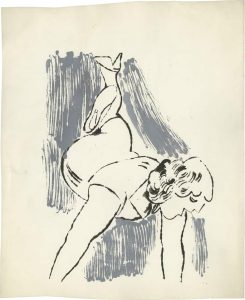
April 24, 2012 — April 29, 2012
Daniel Blau Ltd. is pleased to be exhibiting at this year’s Spring Decorative Fair for the first time. We will be showcasing a specially selected collection of photographs that explore the portrayal of women throughout the history of photography. The thematic content of the photographs ranges from a large portrait of Marilyn Monroe to foot binding practices in China. The collection will interest the discerning interior decorator, as well as the avid collector of historical images.
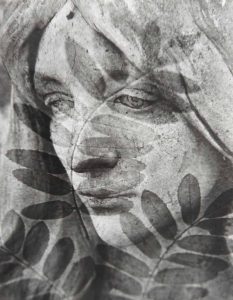
March 16, 2012 — March 25, 2012
Daniel Blau is pleased to present Old Master Photographers: Photographs from the 1850’s alongside our exhibition of Andy Warhol drawings from the 1950’s. These photographers are the original masters who developed the science and the aesthetics of photography – the first to truly experiment with and push the boundaries of the medium.
Warhol’s sensual early drawings coalesce brilliantly with the images from the first decades of photography – both selections have the capacity to teach us direct lessons on what it means to create, rather than to produce, as well as portraying the genesis of artist and medium.
It’s interesting to see what has happened in the 100 years between the generation of these photographs and of Warhol’s drawings. The photograph was a revolutionary development, which caused many frustrated artists to swap their paint brushes for cameras and to utilize photography as their main artistic media.
As a new discovery we’re showing a series of photographs of a tapestry taken by the Bisson brothers for the Duke of Luynes in 1855 – 6 successive photographs arranged side by side to form a large picture of about 70 x 100 cm!
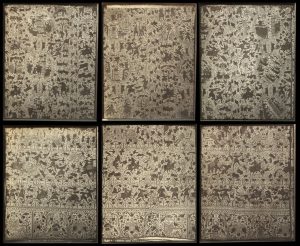
March 16, 2012 — March 25, 2012
“Drawing as an exploding plastic metaphor – graphite becomes an extension of the artist’s fingers”.
Quote from the catalogue essay by Sydney Picasso.
The name “Andy Warhol” brings to mind colourful silkscreens and cans of soup: glossy, finished products arranged neatly on gallery and museum walls. However, his early drawings exhibit a profound technical ability, a draftsman’s skill that reveals a lesser-known Warhol.
We will be showing a collection of extremely rare works from the 1950’s. These are Warhol’s manual experiments with mechanical reproduction and have not seen the light of day for over 50 years. His process of tracing photographs from projected images and blotting the ink onto other pieces of paper is a rudimentary form of printmaking involving multiple stages. We are excited to exhibit these moments of metamorphosis, testaments to a period of revolution in Warhol’s life and artistic career.
Whilst the drawings produced during his first years in New York were often commercial ventures, they embody the embryonic talent so apparent in his later art. These are preliminary drawings, stills from the film of artistic progress, intentional artworks in themselves. They are playfully filled with dotted lines and occasional patches of colour which contrast with the neutral dead surfaces of his subsequent work. This treasure trove from Warhol’s personal collection gives us invaluable new insight into his first ten years as an artist in New York and represents his budding genius. From kids in Central Park to gun-wielding men and a boy shooting up, these drawings are Warhol’s artistic take on the darker side of society.
TEFAF (The European Fine Art Fair)
STAND 443
MECC, 6229 GV Maastricht
The Netherlands
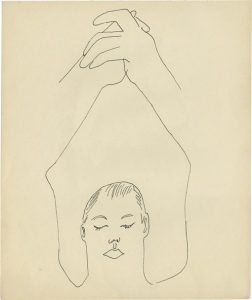
March 29, 2012 — April 1, 2012
This exhibition includes works by some of the greatest photographers of the first generation, such as Alinari, Baldus, Bisson, de Beaucorps, Le Secq, Marville and Nègre and others.
We have selected the pictures not only for their artistic merit but also for the condition and quality of each print. Furthermore the focus of this small selection is on the transitional years 1850-60.
This is a particularly interesting time of rapid developments in photography. The invention of the glass negative and albumen paper gave the artists important choices of “soft” or “sharp focus”, depending on the selected materials.
This difference is nicely illustrated in the two prints from the same negative by Baldus of Michaelangelo’s Slave. One is printed on salt paper and the other on albumen paper and both prints are beautiful in their own rights.
Some artists preferred the traditional paper negatives like for example de Beaucorps who in 1859/60 still used them on his extended travels in Europe and North Africa. Others like the Brothers Alinari or Bisson produced photographs of unsurpassed sharpness and clarity from glass negatives on albumen paper.
The Brothers Bisson made some of their greatest prints at this time. The large and mysterious photo of the Roman architectural detail is an outstanding example of their artistic excellence and technical achievements.
AIPAD
Park Avenue Armory
67th Street and Park Avenue
New York City
Opening: March 28, 2012, 5 – 9 pm
Exhibition: March 29 – 31, 11 – 6 pm / April 1, 11 – 5 pm
Gustave Le Gray will not be included here, as his works are being shown in our special exhibition “Thoroughly Le Gray” at the rooms of C.G. Boerner.
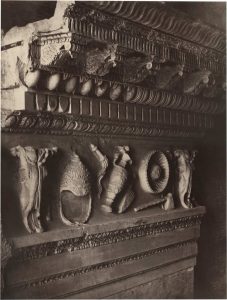
March 27, 2012 — April 1, 2012
A special exhibition at the rooms of C.G. Boerner in NY
As Picasso was the central star for painting and Man Ray for modern photography, Gustave Le Gray was the prominent figure early 19th Century photographers had to conquer before they could make a name for themselves.
Like many of his colleagues, Le Gray was a painter before he enthusiastically embraced the new medium of photography. By 1849 he had entered the Paris photo scene with his calotype landscapes taken in Fontainebleau and from there found further influence teaching photography to a group of students including Du Camp, Le Secq, Mestral and Tournachon, who in turn would also go on to achieve great fame in photography.
His ground breaking inventions rapidly set new standards for size and quality. In 1857, his Vague Brisée, a “snap-shot” of a small boat with wind-filled sails and a breaking wave in the foreground, was shown to an approving and fascinated audience.
As a technical perfectionist, Le Gray was above all a great painter with the camera.
In addition to the excellent Vague Brisée three new discoveries will be shown, calotypes taken at Fontainebleau castle. Rare treasures from the estate of his colleague Le Secq, they appear to be the only surviving examples of these images.
We are thrilled to present these works to our American audience and consider our gallery very fortunate to reintroduce these pictures to the œuvre of Le Gray.
Opening: March 27, 6 – 9 pm
Exhibition: March 28 – 30, 10 – 6 pm / March 31 & April 1, 11 – 5 pm
C.G. Boerner,
23 East 73 Street (3rd floor)
New York, NY 10021
+1 / 212 / 772 7330
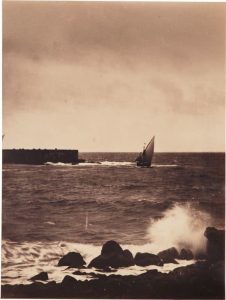
December 13, 2011 — January 31, 2012
Daniel Blau is pleased to present a unique collection of rare vintage NASA photographs. These incredible pictures depict the wonder and awe of space travel.
These photographs have become part of our collective visual memory for the twentieth century; pictures that markedly symbolise the speed and power of post-war technological development at a time when Cold War tension was rife between the US and Russia. And so began the space race; the period of the 1960’s that saw the first man on the Moon. Missile technology, taken from Germany at the close of WWII, set the technological precedence for manned space crafts to orbit the Earth, eventually landing on lunar soil: a period in human history incomparable to any other; photographed, with immense beauty, for the whole world to gaze in astound.
These are not simple snap-shots by an amateur, taken with a Kodak box, but the result of the combined efforts of thousands of workers and scientists at NASA. Indeed, these are the most expensive photographs ever produced. To see these prints in the flesh is an experience as close to bouncing on lunar soil as any of us will ever get. These magnificent landscapes can be compared to Gustav Le Gray’s large prints of Fontainebleau or his seascapes. Today we treasure these vintage prints for their artistic quality and as permanent visual evidence of a time when the future seemed so close…
‘…Our first shock comes as we stop our spinning motion and swing ourselves around so as to bring the Moon into view. We have not been able to see the Moon for nearly a day now, and the change is electrifying. The Moon I have known all my life, that two-dimensional small yellow disk in the sky, has gone away somewhere, to be replaced by the most awesome sphere I have ever seen. To begin with, it is huge, completely filling our window. Second, it is three-dimensional. The belly of it bulges out toward us in such a pronounced fashion that I almost feel I can reach to touch it…’
– Michael Collins, Apollo XI, July 1969 (NASA Sp-350, 1975, p. 207)
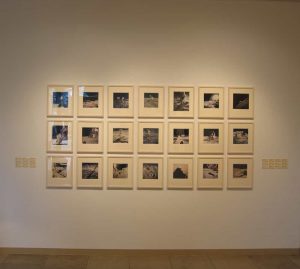





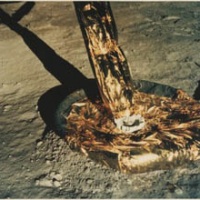
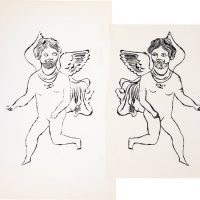


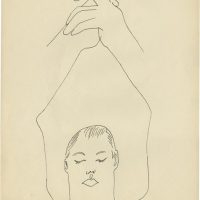

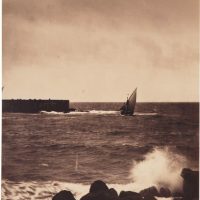

 +49 89 29 73 42
+49 89 29 73 42